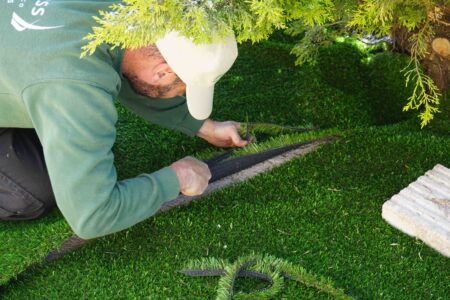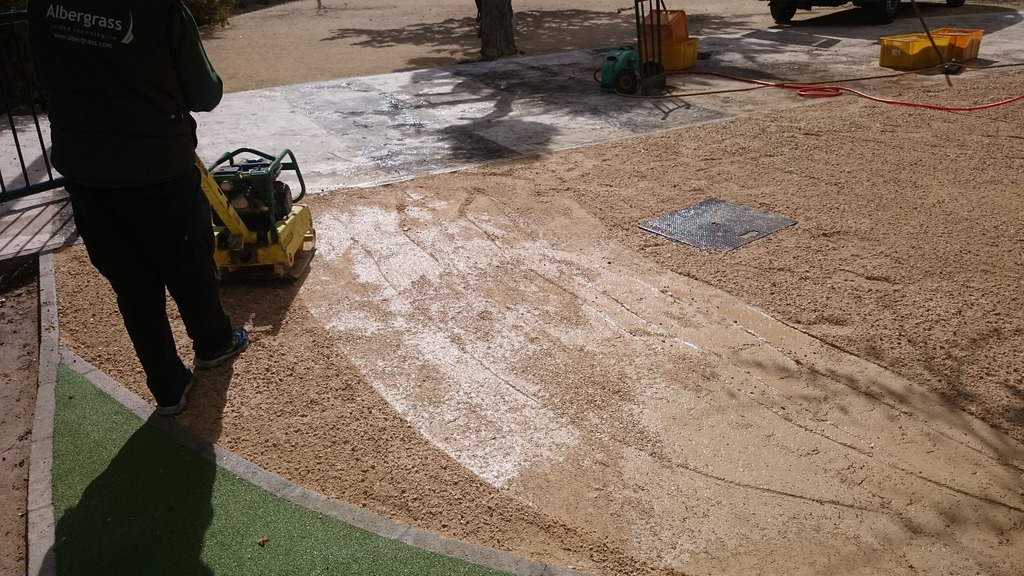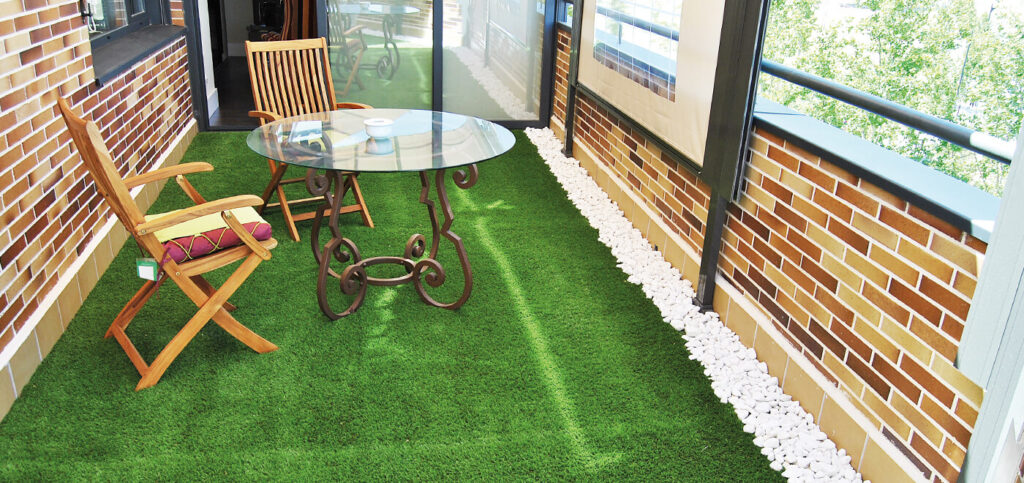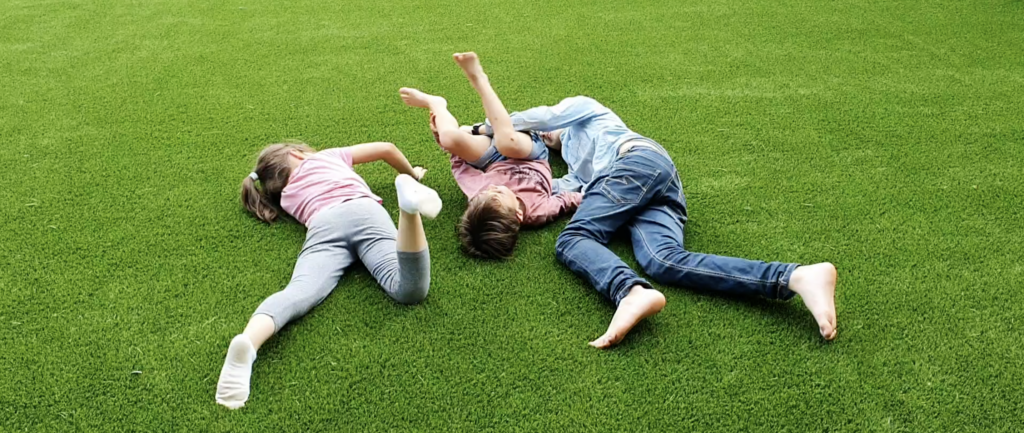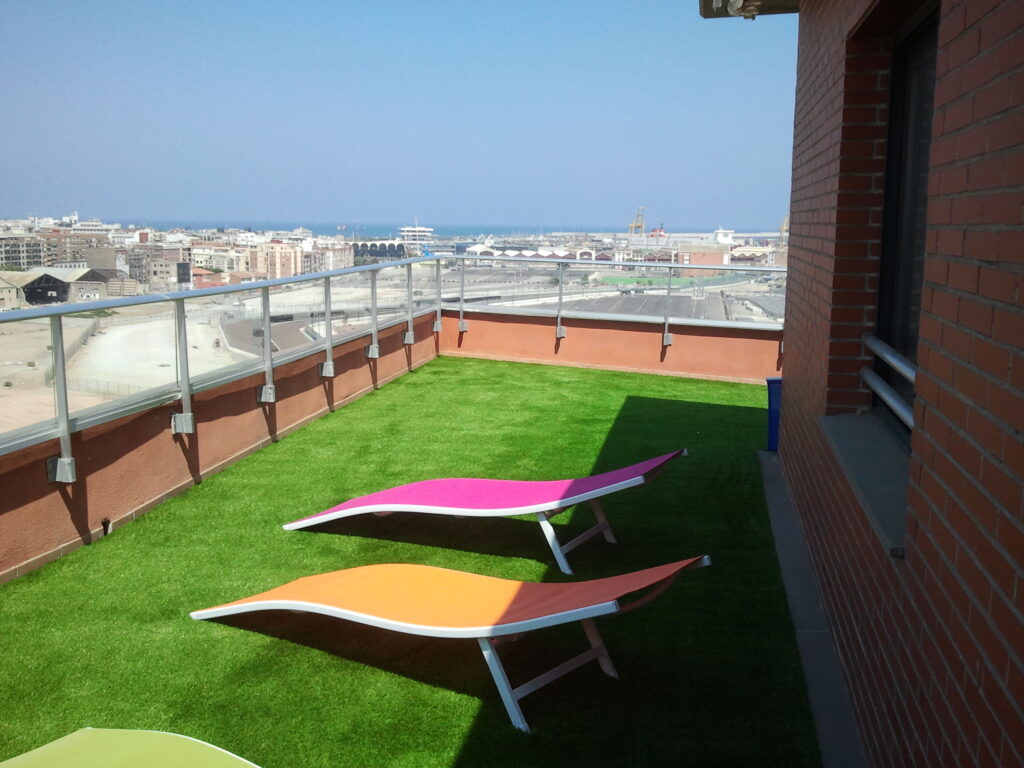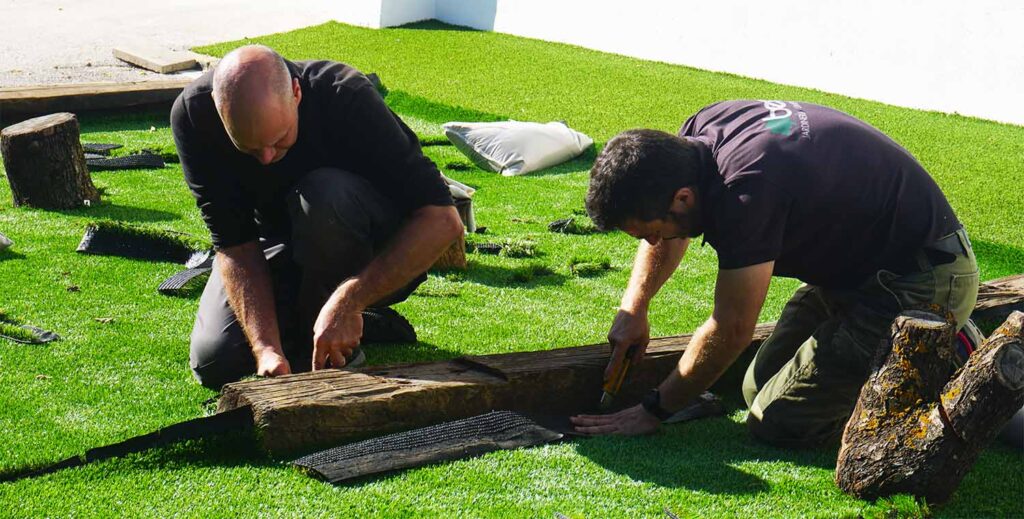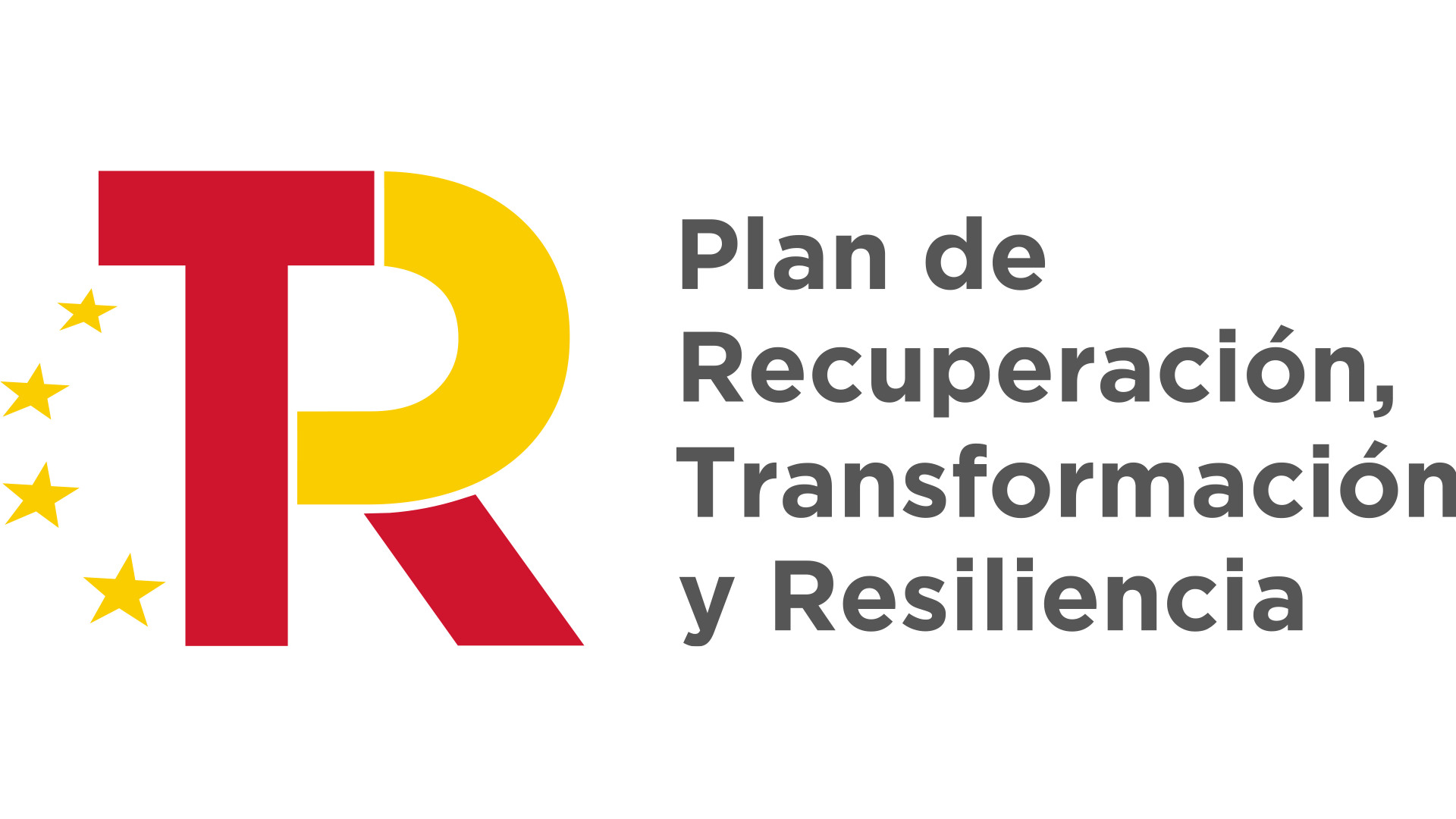How to install artificial turf in wet areas
The installation of artificial turf in wet areas has some particularities that you must take into account to obtain a perfect result. In Albergrass we give you some tips.
Installing artificial turf may seem like a simple task, but our experience as professional installers tells us that it’s not as easy as it looks. it is not as easy as it seems. There are many aspects to take into account. One of the most important is the particularity of the terrain.
Artificial turf in wet areas
When the ground where you are going to install the artificial turf is a wet area, the installation becomes more complex. The most important thing in this case is ensure good drainage so that moisture does not condense and generate moss or mildew problems. moss or mold problems affecting the durability, hygiene and maintenance of the artificial turf.
Steps to follow when installing artificial turf in wet areas
If you decide to install artificial turf in wet areas by yourself, we explain how to do it.
First: buy quality artificial turf
Synthetic grass of Albergrass synthetic grass has a series of perforations that guarantee good water drainage, and is made of rot-proof materials that avoid moisture problems as much as possible..
Second: organize materials and tools
Organization is the key to fast and efficient work.
You will need: rolls of artificial turf, tools (rake, trowel, scissors, shovel…), weed control nettingss, silica sand, bands glue, paper, pencil, pencil, y tape measure.
We advise you to make a sketch where you include all the obstacles in the space. that the space has (trees, large stones, columns, railings, planters, steps…).
Third: measurements and site preparation
Make all the measurements (width, length) of the surface where you are going to install the artificial turf.
Synthetic grass must be installed on an area without roughness, completely smooth. Therefore, you must first prepare the ground (clean and smooth it). In wet areas we advise you to placing a compacted layer of gravel that absorbs moisture and facilitates drainage. Also a mesh that prevents the growth of weeds.
In the work of land preparation you must make the slopes (ground slopes) necessary to ensure water drainage. If a drain is installed in the space, mark its position so that it can be accessed without having to mow the lawn.
Fourth: laying the turf
Roll out the rolls of artificial turf. Remember that it is flawed in the direction of rolling. Therefore, lay the pieces all in the same direction to obtain a uniform appearance.
At Albergrass we advise you to leave an extra 5 cm.s at each end for a more precise precise.
The next step is to join the pieces of artificial turf, one by one. This can be done using glue bicomponent PU or self-adhesive tape.
Fifth: esparce the silica sand and brush the artificial turf.
In wet areas it is essential to spread silica sand on the artificial turf. This material fixes the grass on the ground, facilitates water drainage and improves verticality..
The only thing left to do is to brush the lawn for a perfect result.
At Albergrass we recommend that you go to professional installers so that the result is perfect. Our experience guarantees you that your artificial grass in wet areas will last longer and you will save money and time.

